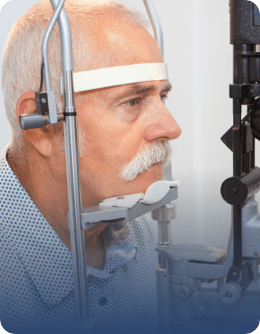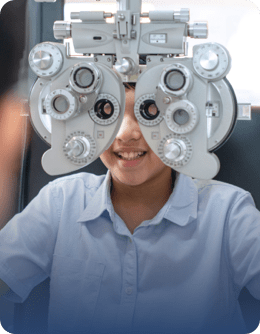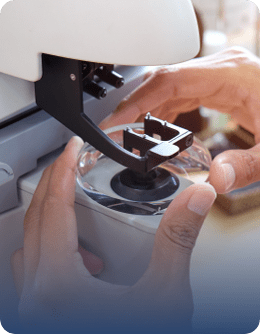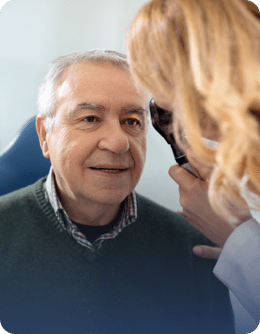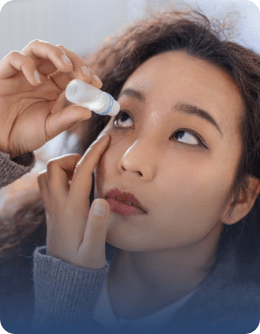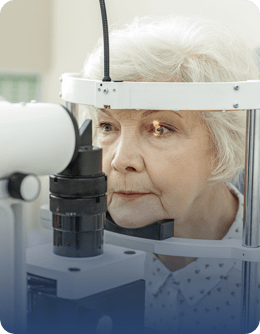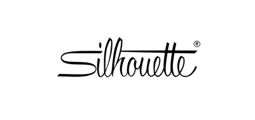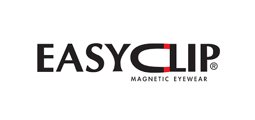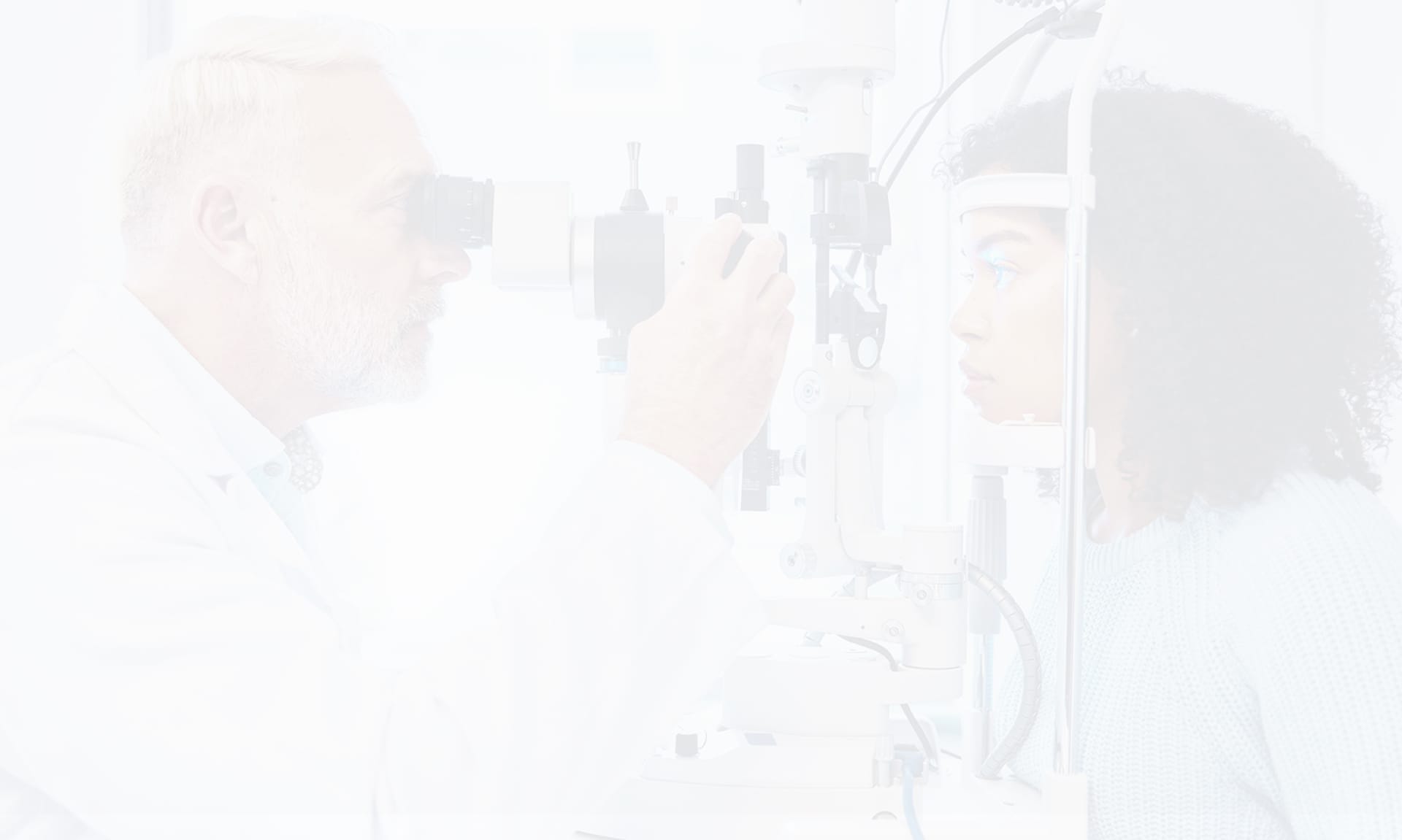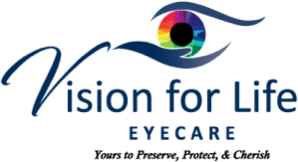Driving at night already presents unique challenges, but for people with astigmatism, the visual distortion night driving brings feels amplified. It can feel like navigating a maze of blurry lights and shadows.
If you’ve found yourself squinting more than usual, struggling with glare from headlights, or seeing halos around streetlights, you’re not alone.
Astigmatism causes vision to appear more distorted and blurry under low-light conditions. Driving with prescription anti-reflective lenses corrects astigmatism, reduces glare from surrounding traffic, and improves visual clarity in low-light conditions.
Together, our Vision For Life Eyecare team can help you find the right lens coatings to support your daily endeavors, like making night driving more comfortable.
Astigmatism Meets Night Driving
A refractive error, like astigmatism, occurs when the shape of the eye’s lens or cornea becomes irregular. Ideally, the eye’s shape should be spherical, however, astigmatism shapes the eye more like a football.
This uneven shape distorts how light enters the eye, preventing it from focusing evenly on the retina. The result? Vision is blurry and distorted at varying distances.
Truthfully, astigmatism is usually nothing to worry about. It’s incredibly common; 1 in 3 people have it to some degree. However, the visual distortion and blurriness it causes can significantly affect daily life, including night driving.
Navigating Night Driving
Even in ideal conditions, driving requires constant focus and solid visual clarity to keep everyone safe. With no snow on the roads and clear blue skies, we’re still not immune to hazards while driving. These risks increase when night driving, where accidents are 3 times more likely to occur.
Night driving is basically driving in low-light conditions, and your eyes go through several changes as brightness transitions out.
The pupils dilate, allowing more light to enter the eye. During the day, cone cells within the retina help us detect colour or sharp detail, meanwhile, rod cells take over in dim lighting. Although these cells are very sensitive in low-light conditions, rod cells cannot perceive details as well as their cone counterparts.
Now, factor in dim lighting with bright oncoming traffic: overall visibility is already slightly off.
As your eye adjusts to low-light conditions, glare from streetlights, headlights, or reflective surfaces can create further visual discomfort. Even though your pupils dilate to accommodate this change, they can’t filter out harsh light from surrounding traffic, which exacerbates distortions for those with astigmatism.
Common night driving struggles for those with astigmatism include:
- Glare and halos: Bright lights from oncoming traffic, streetlights, or traffic signals can appear blurry, with halos or starburst-like shapes.
- Blurry vision: Astigmatism causes vision to appear more distorted under low-light conditions, making it harder to judge distances and read road signs.
- Eye strain: Your eyes work harder to focus in poor lighting, leading to discomfort over time.
Combined, these issues can make night driving tiring and hazardous, leaving many drivers searching for effective solutions.

Correcting Astigmatism: Tips for Safer Night Driving
We can’t reverse or alter changes to the eye’s shape, however, we can effectively correct astigmatism with solutions like eyeglasses or contacts.
When we factor in night driving, there are a few tips to keep in mind that can improve visual clarity and comfort while correcting astigmatism.
Wear Prescription Anti-Reflective Eyeglasses
Anti-reflective (AR) lenses are a game-changer for night drivers with astigmatism.
These lenses eliminate reflections from headlights, streetlights, and other surfaces, significantly reducing glare. This means sharper vision and less eye strain in low-light conditions.
AR coatings minimize the reflection of light bouncing off your lenses, allowing more light to pass through. This enhances clarity, reduces distractions, and improves visibility at night.
When choosing prescription eyeglasses, consider getting your glasses directly from your eye doctor. Beyond verifying an accurate prescription, eye doctors often provide premium coatings tailored to your specific needs, unlike many online retailers.
Skip Yellow-Tinted Night Driving Glasses
Despite being widely marketed, yellow-tinted night driving glasses are not an effective solution.
Research shows that these lenses actually reduce the amount of light entering your eyes, which is counterproductive in low-light conditions. They may give the illusion of clarity because of the reduced glare, but they can hinder your ability to see crucial details on the road.
If you’re truly aiming for improved night vision, AR lenses are the better option. Have a discussion with your optometrist about what lenses are right for you rather than relying on popular but misleading products.
Get Routine Eye Exams
Nothing beats the value of a professional eye exam.
Your optometrist won’t just update your prescription; they’ll also check for other conditions that could affect your night vision, like cataracts or dry eye syndrome. Regular exams confirm your eyes are healthy, allowing you to drive more confidently both day and night.
Take Frequent Breaks
Remember to take breaks if you’re going on long drives at night.
Eye strain from astigmatism can build up over time, so give your eyes a rest every couple of hours. Staying hydrated and blinking consciously can also help alleviate dryness and discomfort.
Clearer Nights Start with Better Vision
Night driving might be stressful for several reasons, but your vision shouldn’t be one of them. Equipping yourself with prescription anti-reflective glasses helps correct visual distortion astigmatism can amplify, helping you stay focused on the road.
If night driving feels like a struggle, it might be time to visit your eye doctor. Beyond a prescription update, they offer expert advice on eyewear options suitable for your visual needs and lifestyle. After all, clearer vision isn’t just about seeing better; it’s about driving safer. Connect with our Vision For Life Eyecare team to schedule an appointment for your routine eye exam.
